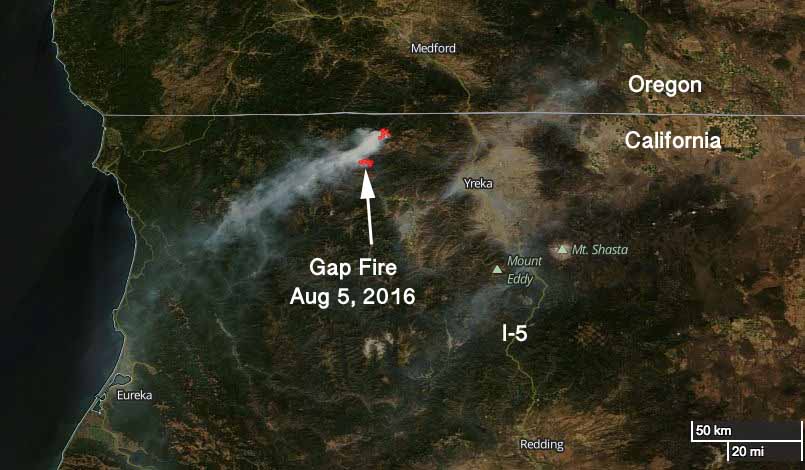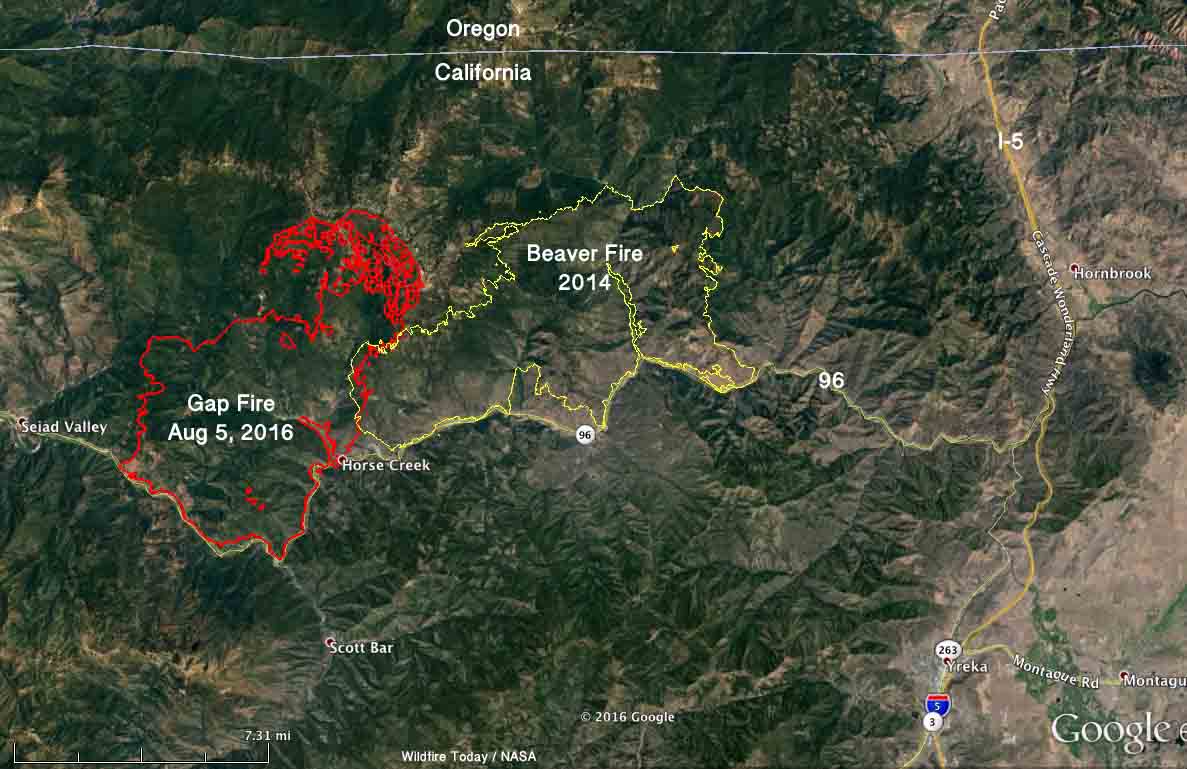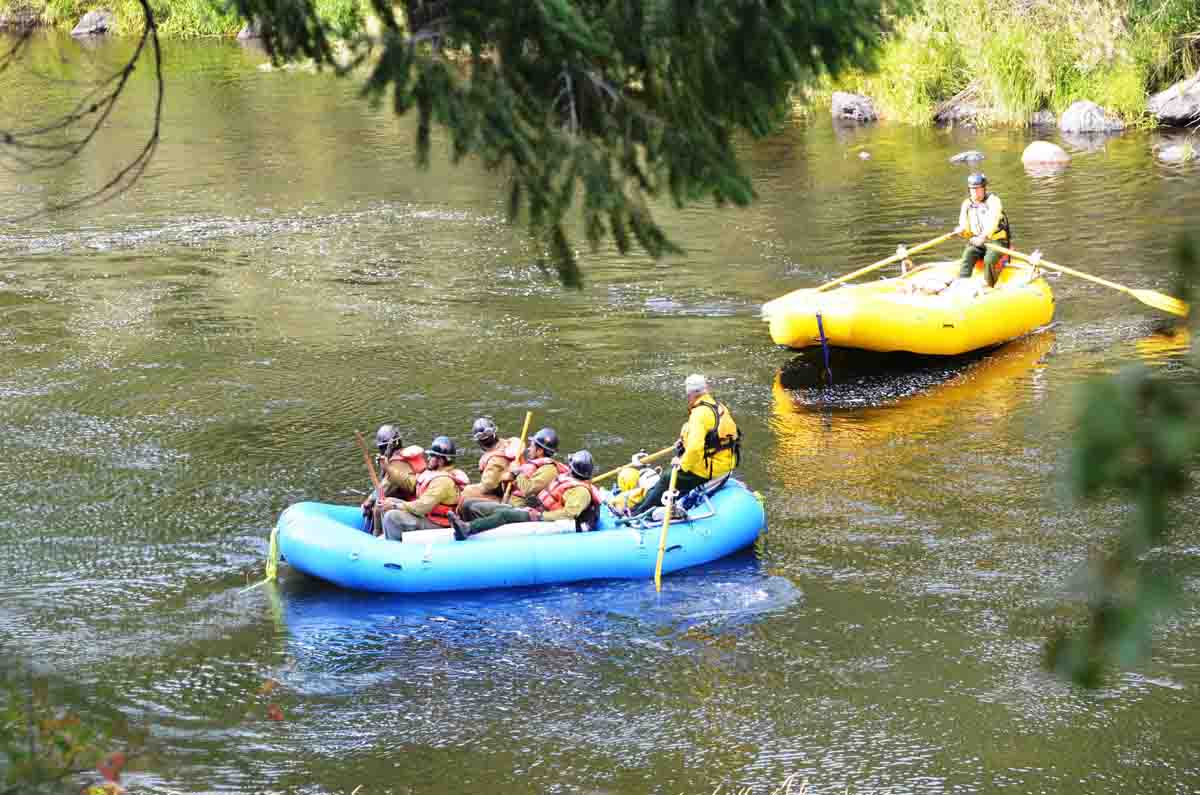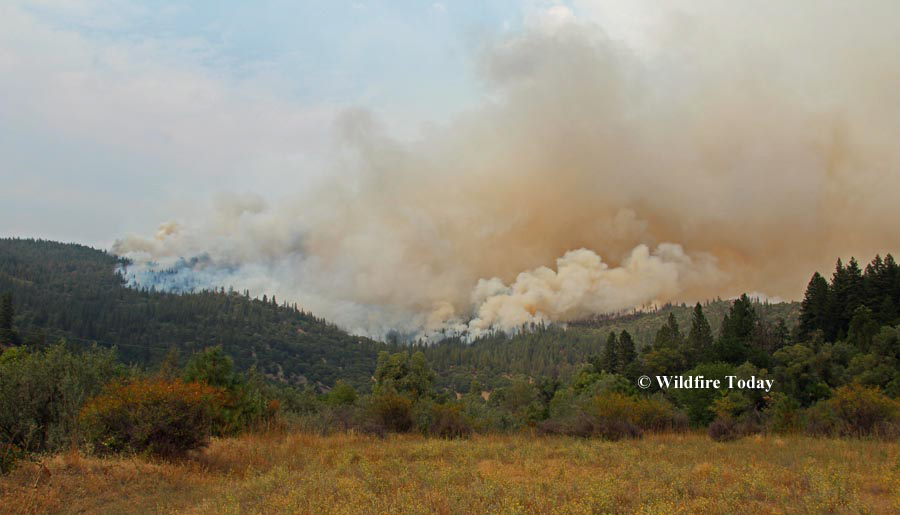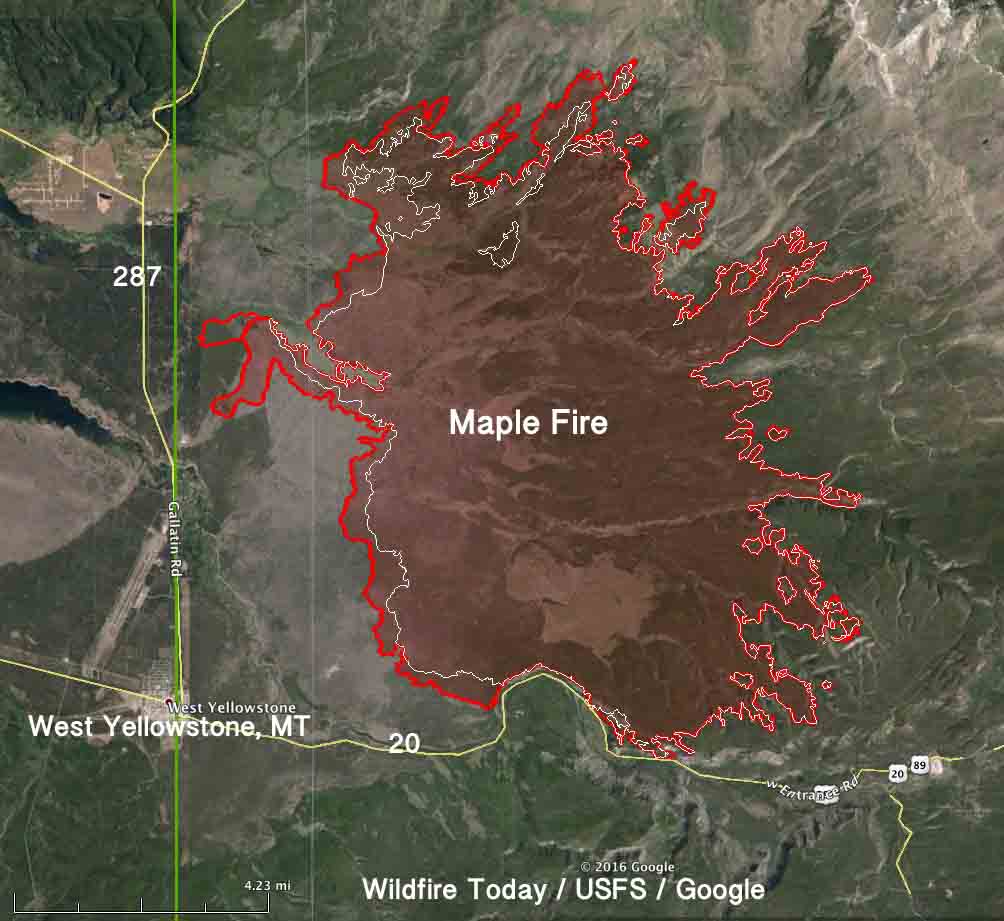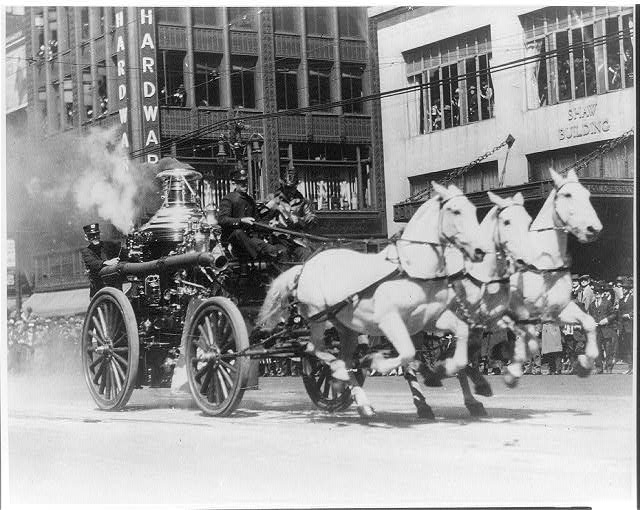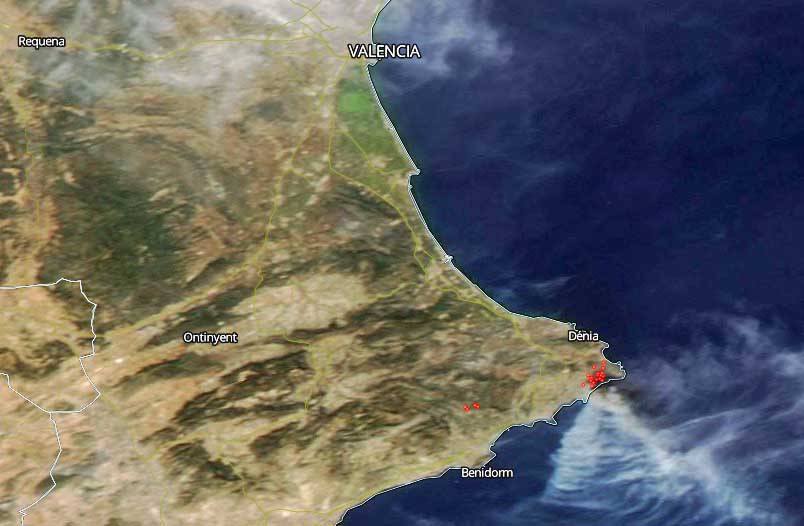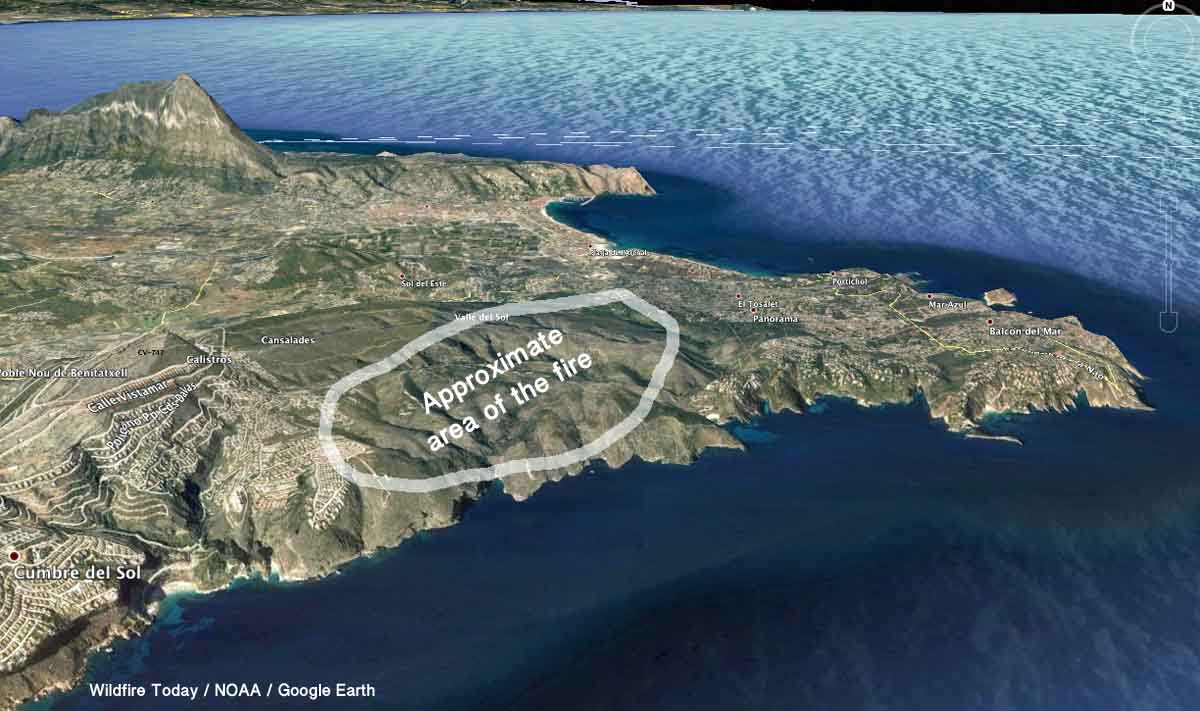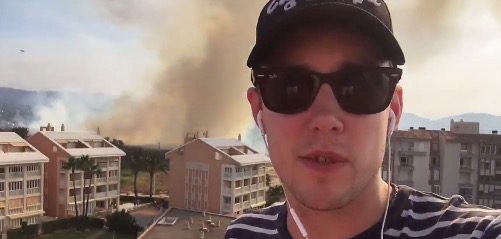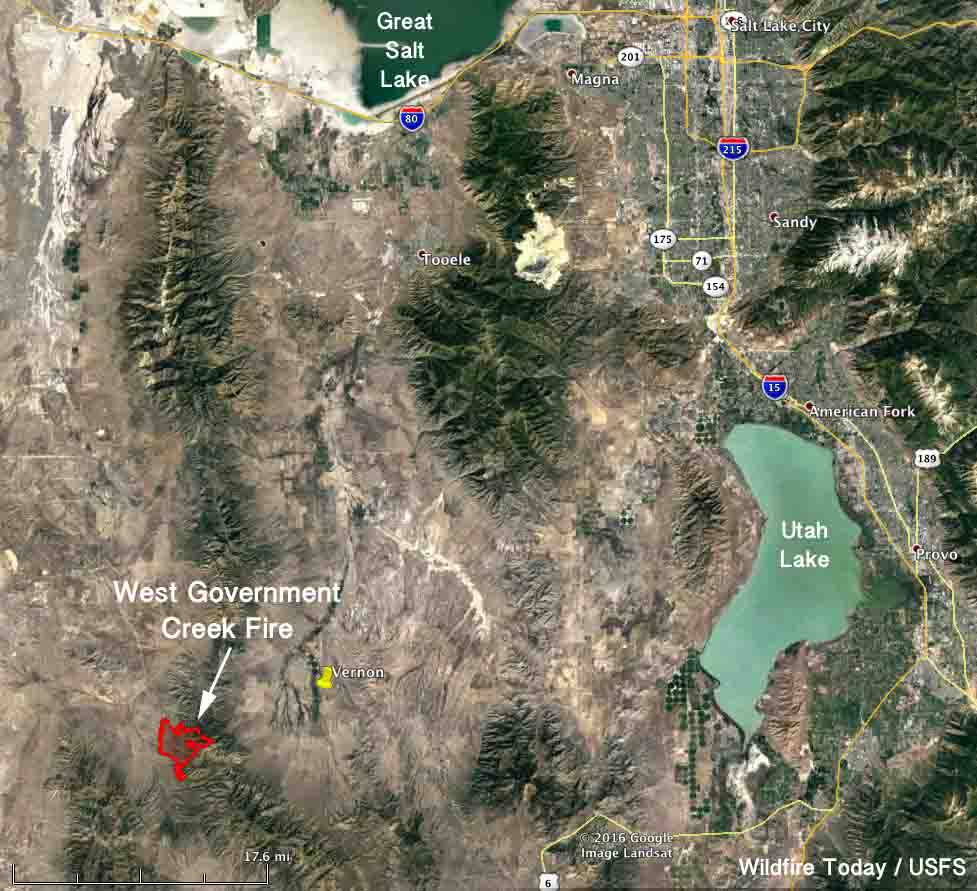(UPDATE September 7, 2016: investigators determined that the fire started from sparks created when a golfer’s club struck a rock.)
Firefighters on the ground and in the air stopped a wildfire in Mission Viejo, California Tuesday afternoon after it burned 20 to 25 acres near the Arroyo Trabuco golf course east of Interstate 5 in Orange County.
Aside from the excellent job by the personnel at the scene, we were interested in this fire because of two photos put on Twitter by Maaike aka Shinobi (@ShinobiHaruka) showing before and after, or, during and after. There is a remarkable change in a short amount of time. The photos are used here with her permission. (We enlarged the flying object and pasted it as an inset.)
I think the photos were taken not more than two hours apart.




